Enemy tanks of Ukraine: T-64 series
The scale of the Ukrainian catastrophe
According to official data from the Ministry of Defense of the Russian Federation, by mid-June, more than 3,5 thousand armored vehicles of the Armed Forces of Ukraine and the National Guard were destroyed. How much of this number is Tanks, is not known for certain. The nature of the Russian special operation seriously complicates an accurate count of tanks destroyed or temporarily disabled. high precision weapon hits equipment at a distance of several hundred kilometers from the front line. If in the first months numerous bloggers at least partially disclosed the quantitative and qualitative losses of tanks, infantry fighting vehicles and armored personnel carriers in the rear, now in Ukraine this is a criminal offense.
At the moment, it remains to believe the press service of the Ministry of Defense of the Russian Federation and numerous photo and video evidence. But data from social networks and instant messengers should be trusted very conditionally.
Firstly, the photographs show far from all the destroyed or captured armored vehicles. You won’t send a reporter for every destroyed Ukrainian tank to photograph the act of death.
Secondly, photographs are relatively easy to manipulate. One burnt tank can be dragged around the neighborhood, captured from different angles and angles - please, this is how the myth of one and a half thousand destroyed Russian tanks is born.
Western accountants will invariably artificially increase the losses of Russian troops and underestimate the extent of the loss of Bandera's armored vehicles. Together with Ukrainian propagandists, these lively guys claim that the nationalists every day knock out at least 12-15 tanks of the allied forces. This is not documented in any way.
Thirdly, some Ukrainian vehicles on the battlefield are so fundamentally broken that only specialists can determine the identity of the tank. Therefore, the burned-out remains of a tank can easily be called a Russian machine - the interested part of the public will readily eat disinformation. Later, of course, one of the experts will refute the next fake of the "cissists", but this will no longer matter. As you know, whoever threw out the first fake has the “truth”.
Currently, photo and video evidence in the public domain speaks of the loss by the Ukrainian side of at least 200 tanks, half of which were left to the allied forces. We emphasize that, in fact, much more Bandera tanks were destroyed, but it is not possible to provide objective control data. An accurate count will be possible only after the end of the special operation and the transition to the control of the allied army of the entire territory of Ukraine.
If everything is very vague with the quantitative composition of the destroyed equipment, then with the qualitative one, the situation is much more transparent. And the main role here is played by tanks of the T-64 series.
T-64 in the service of Bandera
The entire color of Soviet tank building and even partially Russian captured vehicles are now fighting on the side of the Armed Forces of Ukraine. Let's leave an assessment of the effectiveness and number of Bandera trophies outside the scope of this material - here we can’t even come close to the truth. But the tanks under the "yellow-blakyt" flag are exceptionally interesting.
For example, in Mariupol, nationalists removed from the pedestal and tried to send into battle the oldest tank from the selection - the T-64A. To the credit of the Kharkov designers, the armored car performed its functions quite tolerably, however, it never made it to the battle.
The production of the world's first tank with a 125-mm cannon in this modification was completed back in 1980. Even if we imagine that the car could be led to the attack, it would have lived to see the first grenade launcher. Despite the fact that the T-64A has combined armor, it is completely devoid of dynamic protection.
The only Ukrainian T-64B, destroyed at the end of April, also went into battle with bare armor. Judging by the photo, ammunition has traditionally detonated in the car. If we talk about booking, then on version "B" it was possible to strengthen the protection due to the new steel of the BTK-1Sh type, made by electroslag remelting. Without thickening the armor plates, it was possible to increase the projectile resistance by 10-15%. The gun received a new barrel, an improved threaded connection and an upgraded cradle. The remaining changes relate to the fire control system and the installation of Cobra guided weapons.
The most massive Ukrainian tank, whose losses reach at least 133 vehicles, is the T-64BV. In total, there are no more than 400 cars of this series in Ukraine. And yes, this technique also comes from the USSR. For the first time, the T-64BV entered the army back in 1985, and the main design innovation was the Kontakt-1 DZ.
In total, 265 containers with explosives were hung and built into each tank. Kharkiv engineers claim that resistance to cumulative ammunition has increased by 2,2 times, to armor-piercing sub-caliber - by 1,9 times.
The tanks received their baptism of fire in the summer of 1992 in Bender, when they quite successfully opposed the Moldavian Rapiers and grenade launchers. But if thirty years ago the tank was indeed quite modern, now it is only suitable for occasional use in battles. Preferably - at a distance of several hundred meters from the nearest anti-tank weapons and tanks of the allied forces.
Another thing is that a large part of the T-64BV tanks underwent modernization in 2017 and acquired a number of innovations. "Contact-1" was seized and replaced by the Ukrainian DZ "Knife". In addition, the tanks received new night vision devices, satellite navigation and a radio station.
In general, a little more than a hundred tanks were upgraded to the “2017 model of the year”. The motors were left the same (5TDF for 700 hp), and only a small part of the tanks were equipped with 850-horsepower 5TDFM. The mass of the car exceeds 42 tons, and the engine is already frankly not enough - the specific power is only 16,5 liters. s./t. For comparison: the T-72B3 with the V-92S2F diesel engine has a specific power of 24,3 liters. s./t.
By the way, the mobility of tanks in the battles in Ukraine plays an important role. The dependence is direct - the faster and more responsive the tank, the longer it lives.
The next step in the development of the T-64 concept in Ukraine was the Bulats (T-64BM), which were already destroyed at least four copies and two were taken as trophies.
The machines are equipped with the Knife DZ mentioned above, which destroys ammunition with a cumulative jet. Reviews about this product are very mixed. Some Ukrainian experts consider the Knife almost a panacea for RPGs, ATGMs and HEAT rounds. Others point to the excessive power of the remote sensing, when the caterpillars break off from the explosives on the armor, jam the towers and completely demolish all attachments.
Bulats received 850-horsepower engines, which somewhat improved mobility. The rest of the improvements are tactical in nature - the new Irtysh control system, Kombat guided missiles, improved commander and gunner instruments. One of the most important improvements can be considered a closed machine gun mount on the turret. Not all Russian tanks are equipped with such a "luxury".
When describing the machines of the T-64 series, it is important to note that the thermal visibility of the 5TDF and 6-TD engines is somewhat lower than that of the Russian T-72 and T-90. The reason is a special engine duty cycle, higher air consumption and a specific ejection cooling system.
There is another modification - T-64MB2 "Crab", developed at the "Kharkov Design Bureau of Mechanical Engineering. Morozov" (KMDB). The cars were shown to the general public only last year. By the way, several "Crabs" were destroyed in the Kharkov military command school.
The key advantage of the T-64MB2 is the 1-horsepower 000TD-6 diesel engine, which provides the 1-ton tank with good mobility. Only now the dimensions of the six-cylinder "suitcase" (the slang name for Kharkov tank engines) do not allow it to easily fit into the compact MTO of a Ukrainian tank. Therefore, all "Crabs" have a special feature - a characteristic hump above the engine, which is why it was necessary to raise the tank turret by several centimeters, otherwise the 45-degree rotation of the gun would be impossible. To protect the bare area, a forgotten barbette was installed, which did not allow shells to jam the tower. The T-360BM64, like the Bulat units, has a thermal imager mounted.
There are suspicions that all the newest "Crabs" have already been destroyed.
An exotic modification of the "sixty-four" was the T-64B1M, which was discussed in the material "Bandera Armored Uniques of Special Operation "Z".
Even before 2014, this tank was intended for the army of the Congo and was a simplified T-64BM. The car has two characteristic features - there is only a built-in remote control and a turret shelf. It is noted that the tank is devoid of guided weapons. At least four vehicles in good condition were captured.
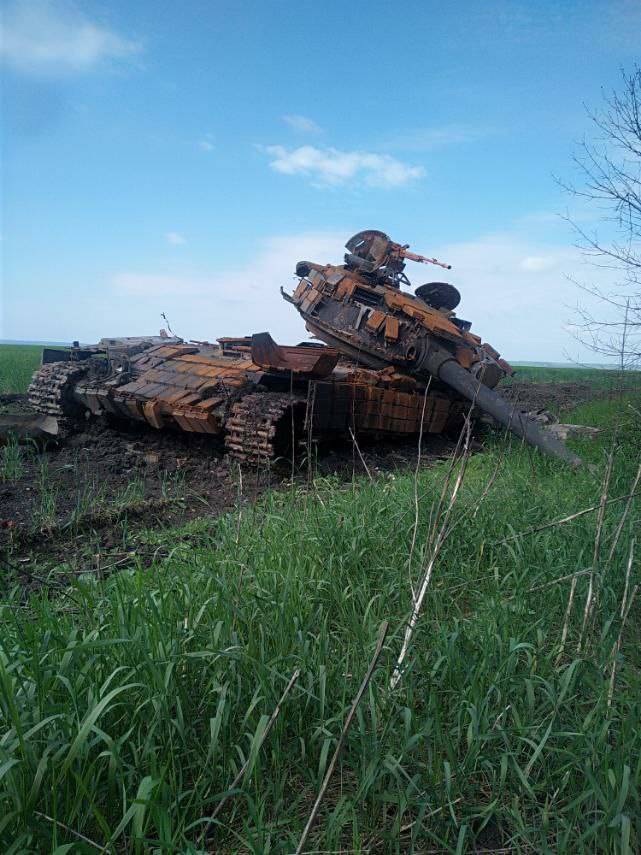
Сonclusion
Summing up the results of the T-64 series, it is worth saying that the Kharkov design bureaus, which are engaged in the refinement of tanks, left the undercarriage unattended. At the same time, the mass of individual modifications has already exceeded 45 tons. The elegant and maximally lightweight running gear is simply not designed for such overloads.
Failure of the suspension and road wheels - has become a common occurrence on the battlefield.
The T-64 and its modifications are the most massive, but by no means the only tanks in the Armed Forces of Ukraine.
The situation is such that tankers have to operate and repair three types of armored vehicles at once, rooted in the T-64, T-72 and T-80.
At least there are difficulties with three types of engines - turbo piston with two crankshafts, V-shaped and gas turbines. This imposes serious restrictions, especially in the context of a long military conflict.
The ending should ...
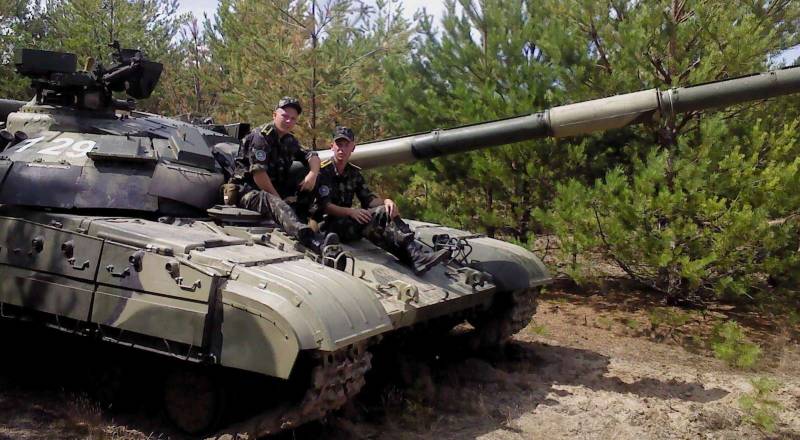
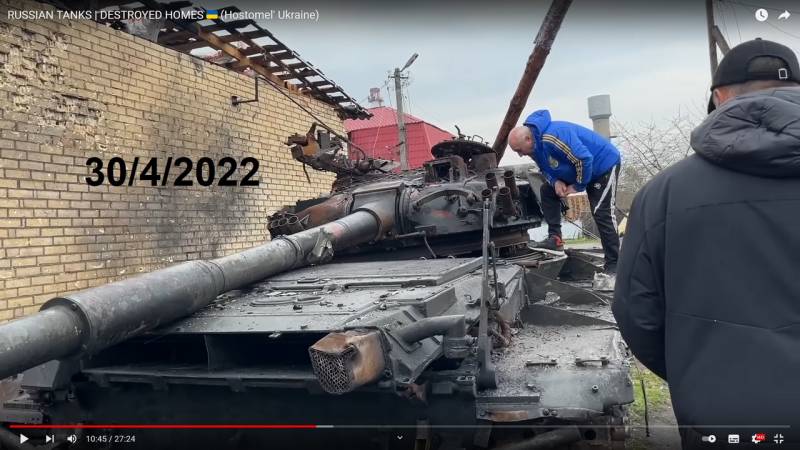

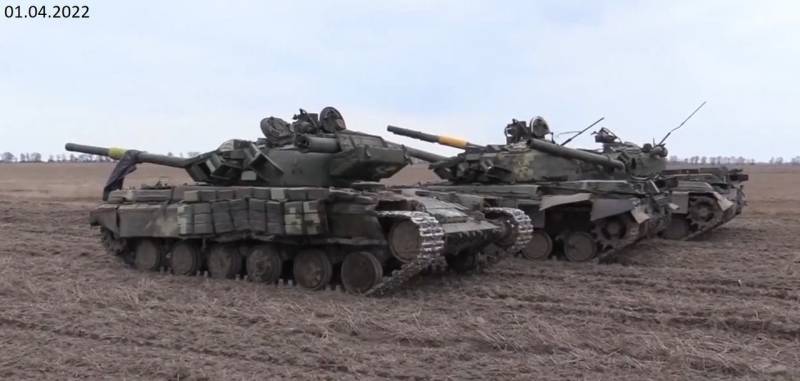
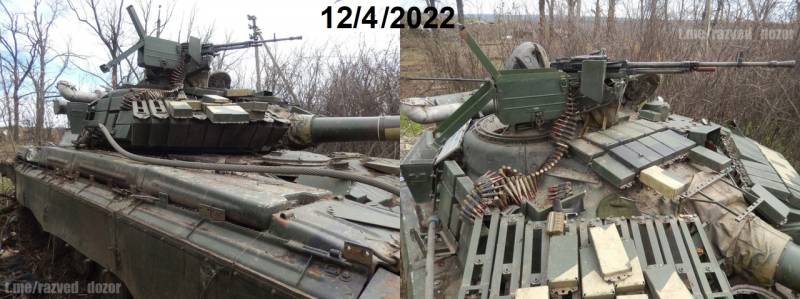
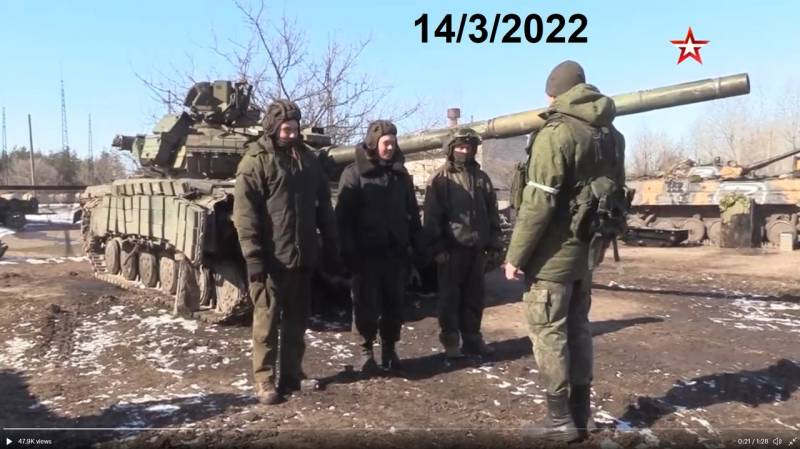


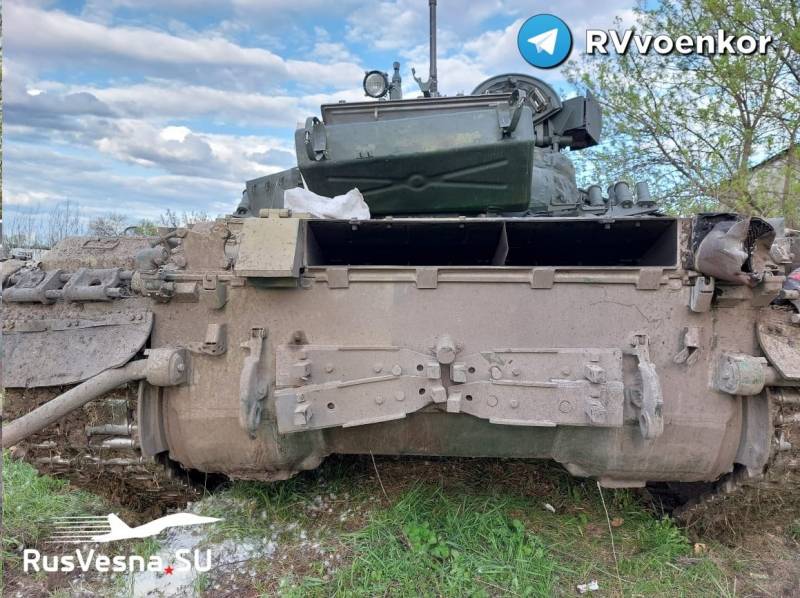
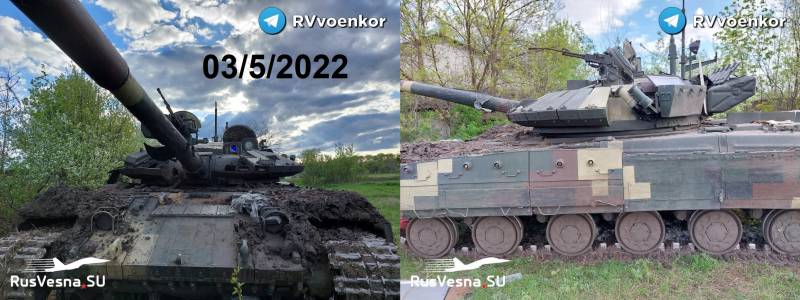
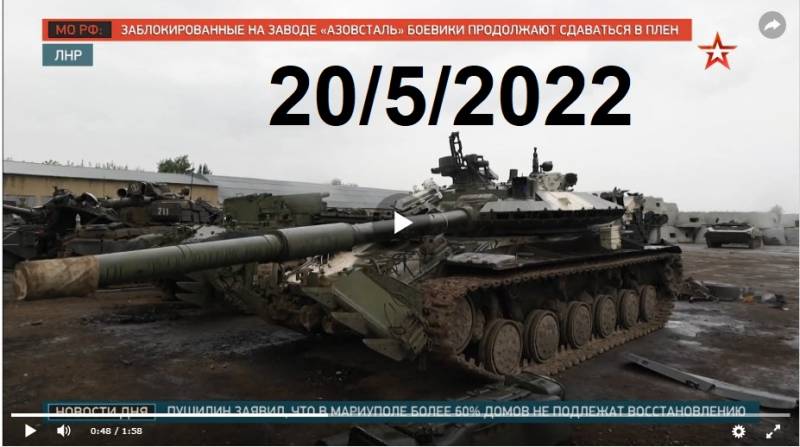
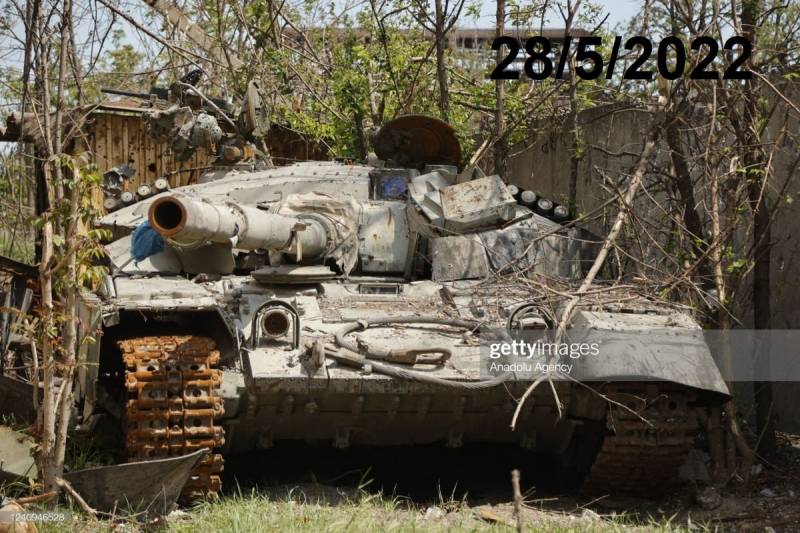
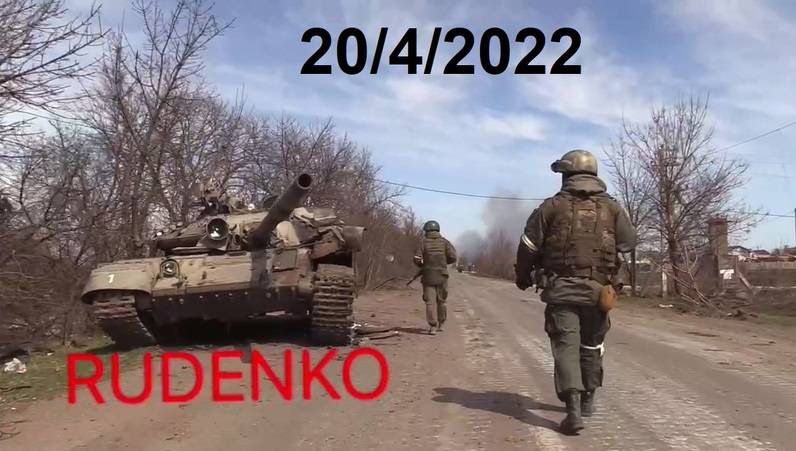
Information